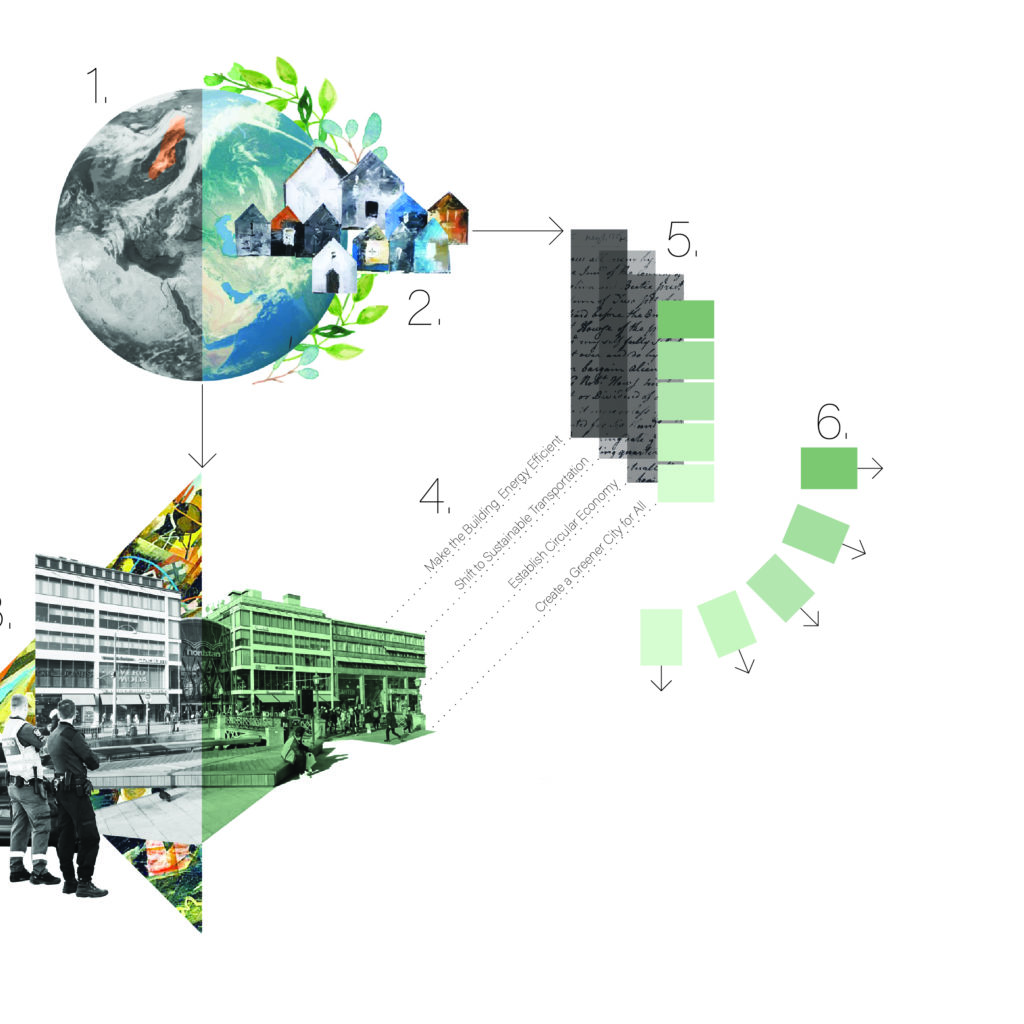RESEARCH PROCESS

1. Overviewing the goals for sustainability
Researching what needs to change to achieve a sustainable future. Looking at the the sustainability goals set by the United Nations, in the ’Agenda 2030’ program. Complementing the international goals with Sweden’s national ones, called ’The environmental objectives’.
2. Narrowing it down
Sorting out the goals and prioritizing after relevance to the built environment. Choosing them after the delimitation-principle to only focus on the changes for sustainability that either affects architecture and the built environment, or architecture and the built environment can affect.
3. Mapping out the unsustainable aspects
With conclusions from analyzing the site, trying to specify the unsustainable aspects that relates to Nordstan. Mapping out potential reasons behind these aspects – the driving forces, and what kind of environmental impacts they lead to. This is presented through a diagram of connections.
4. Responding to the driving forces
Creating 4 responses that alters the driving forces behind the unsustainable aspects of Nordstan. These in turn alters the aspects and changes the outcome of the environmental impacts – creating a sustainable scenario for the site.
5. Summarizing the goals
The goals that are relevant for the built environment are summarized, turning 42 goals into 11. These are then grouped into the 4 different responses that connects to the site.
6. Creating strategies
Specifying different strategies in each response-group, to reach the sustainability goals.